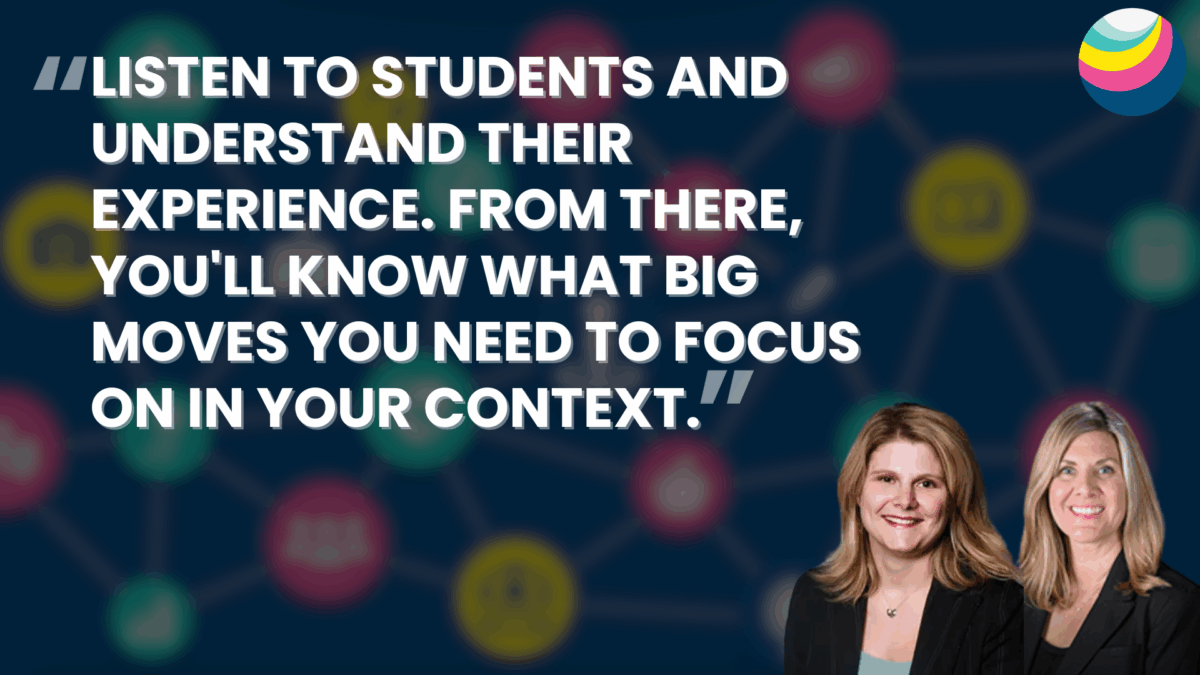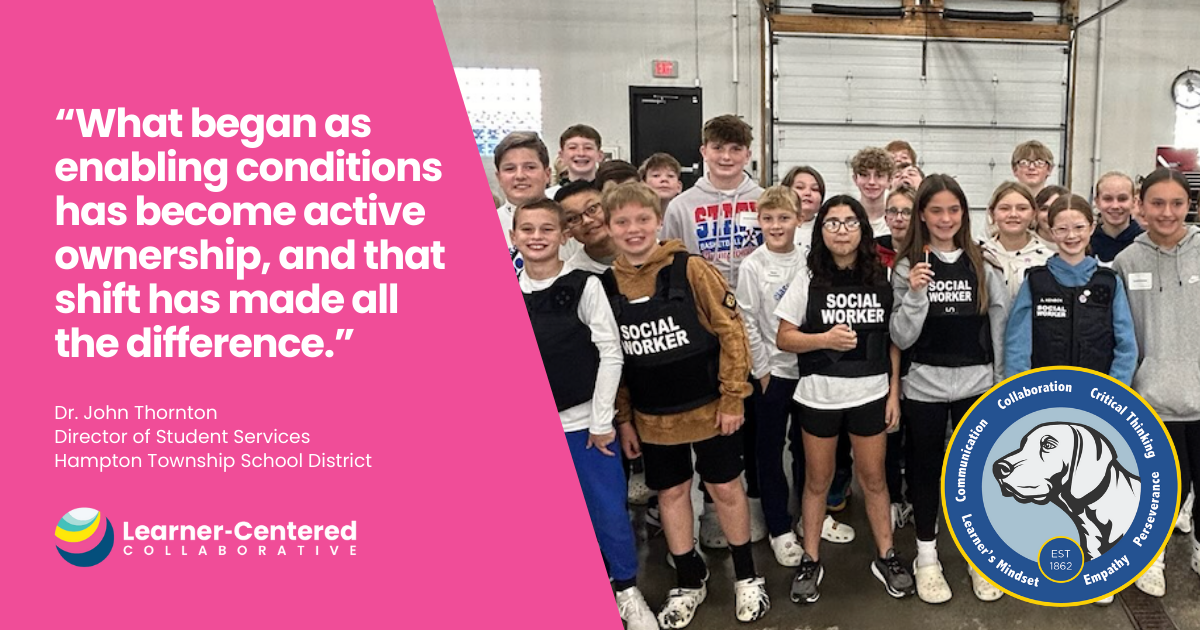Listen, Learn, Lead: Start with Community Engagement
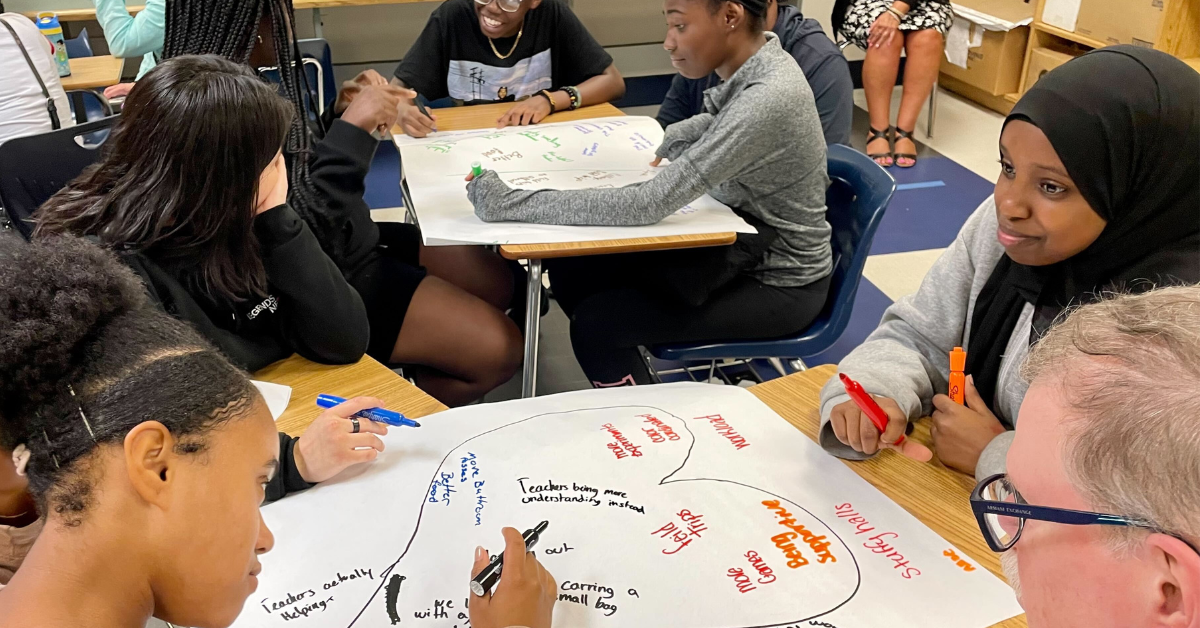
You’re a leader ready to embark on a change initiative in your district. What’s your first step? A common first instinct is to create a plan and put it into practice. But before you do, we recommend you start by engaging with learners, educators, and the community to gather insights about their current experience, identify strengths, and better understand areas of strength to build upon before supporting your collective goals. This crucial step allows you to elevate and engage the diverse voices of your community, rooting your change initiative in inclusivity.
Rooted in the empathy phase in Design Thinking, listening supports school and district leaders in building a nuanced understanding of their educational context. At Learner-Centered Collaborative, we have seen the power of meaningful change and what is possible when you deeply understand your context and intentionally include a wide range of voices from your community to inform the work.
Who to Engage
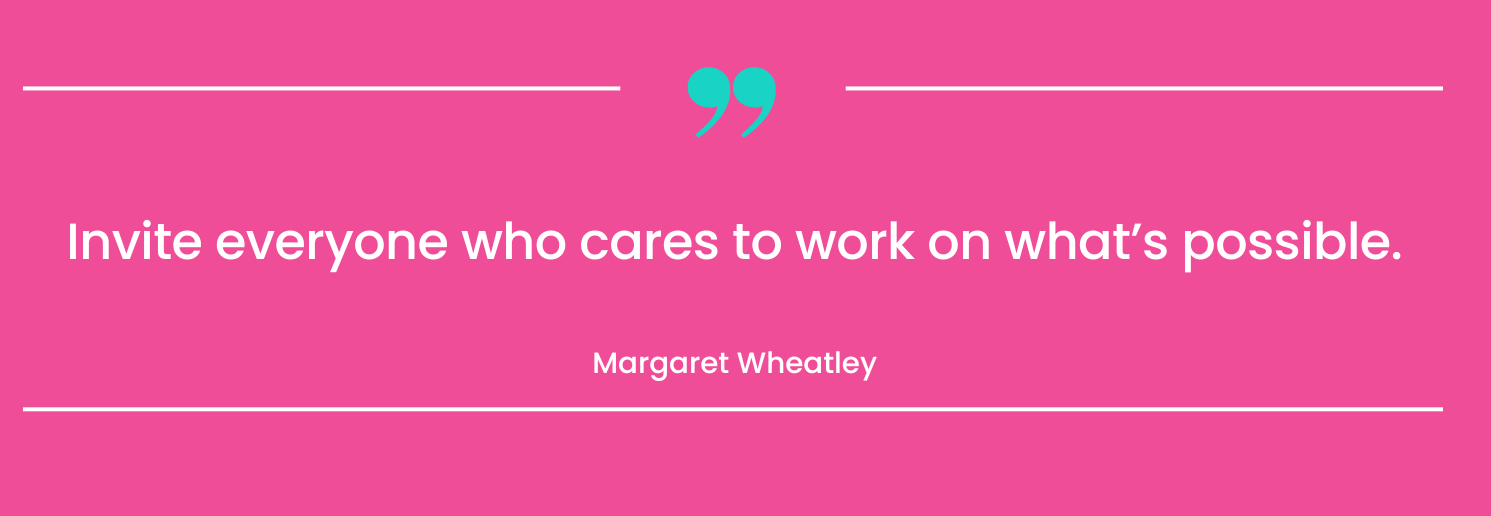
We recommend casting a wide net in terms of who you engage; consider including current students, alumni, teachers, school & district leaders, board members, and community representatives such as families, business leaders, faith leaders, hiring managers, and/or higher ed admission officers.
Think deeply about the voices you often hear, and those you don’t. Ask what has prevented those voices from previously being included. Strategize to create an inclusive opportunity, whether through virtual sessions, language translation, or scheduling around normal business hours. The goal is to hear from as many people as possible to shape the work ahead.
How to Listen
Next, consider the formats that are feasible in your context. We recommend leveraging a variety of engagement formats to ensure you can triangulate data to identify themes. This approach also ensures you have the opportunity for both breadth (lots of input from lots of voices) and depth (deep, nuanced conversation).
1. Surveys
Surveys are not new in the K-12 landscape, but their value in an initial phase of any change initiative should not be underestimated. They offer the opportunity for both quantitative and qualitative feedback, helping you quickly establish a landscape scan in your school or district.
Surveys efficiently gather broad data from large audiences, providing important insights. However, they shouldn’t be used alone to truly understand the experiences and opportunities across diverse communities. With written surveys, it is often difficult to capture deep, nuanced feedback. For a balanced approach, pair surveys with focus groups, forums, or one-on-one interviews. This combination ensures both breadth and depth in your data collection.
At LCC, we have established normed surveys for students, teachers, leaders, and community members to help leaders understand both the strengths and opportunities in their schools and districts. To learn more about Learner-Centered Collaborative’s surveys, read here.
2. Focus Groups, Forums, & 1-1 Interviews
Having deep conversations with your community is at the heart of any empathy work. These deep conversations can take various forms:
- Focus groups: Intimate discussions with 6-10 participants
- Forums: Larger conversations involving 20-30 participants
- One-on-one interviews: In-depth individual discussions
One district leader recently hosted a middle school focus group with 10 students for an hour. She used this list of pre-determined questions and leveraged the framing from Elliot & Associates.
Ready to listen and lead? Explore our resources on empathy interviews, focus groups, and reflective protocols to transform your approach.
During the 60-minute group, the stories shared deeply moved her. She reflected afterward that not only had the student feedback surprised her, but it had shifted her thinking about the transformational change approach entirely. She realized that she would have been solving the wrong problem had she not listened to those learners.
Another school leader hosted a family forum for one hour after school with 30 guardians. While he followed similar norms to the focus group, he incorporated small group discussions (4-6 people) to discuss each prompt and offered visual thinking exercises using chart paper and markers.
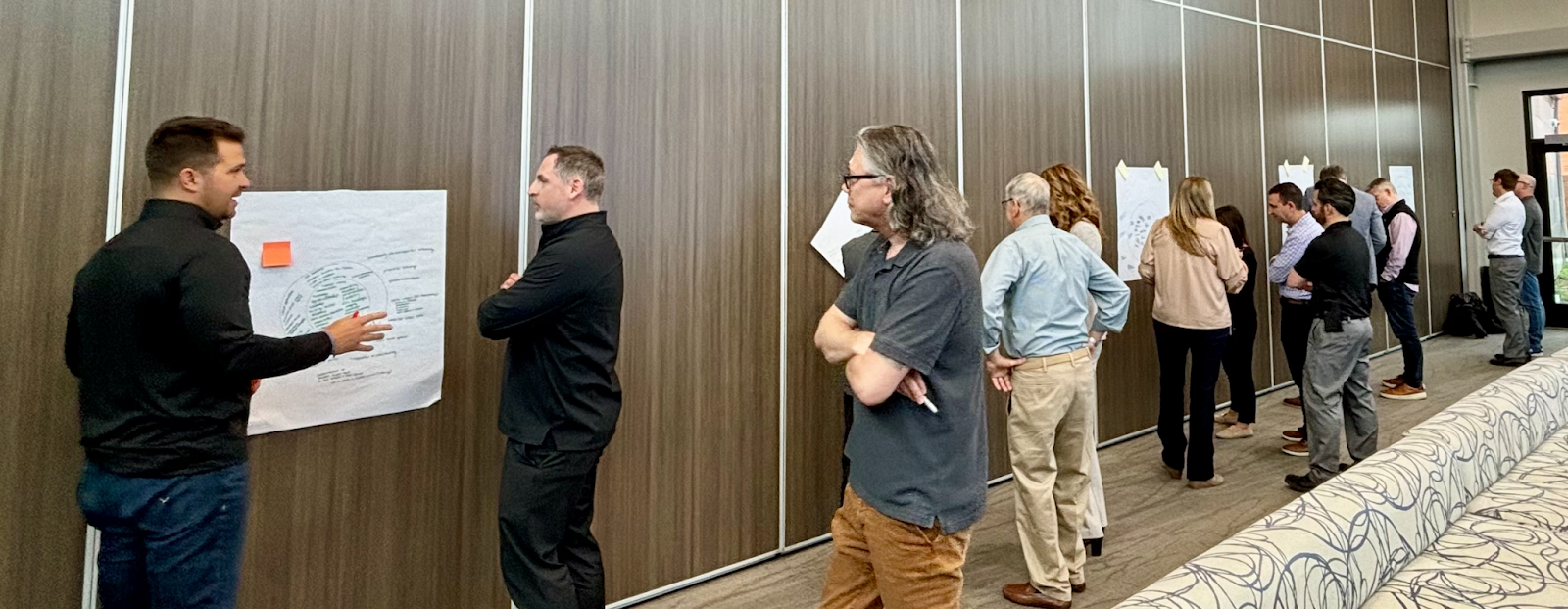 If you’re unsure how to plan for these conversations, consider these 10 questions to ask students as a starting point.
If you’re unsure how to plan for these conversations, consider these 10 questions to ask students as a starting point.
Focus groups, forums, and one-on-one interviews complement surveys in a balanced approach to community engagement. While surveys provide broad data, these methods offer depth through nuanced conversations. They allow for detailed sharing of experiences and follow-up questions, uncovering insights that surveys might miss. By combining these approaches with surveys, you achieve both breadth and depth in your data collection, ensuring a comprehensive and equitable representation of your educational community’s voices, needs, and aspirations.
3. Classroom Visits
Another critical component of empathy work is a quick, non-evaluative visit to classrooms. As a school or district leader, having time to walk through a school building without a clipboard or digital evaluation tool is a treat. Carve out a block of time, visit your buildings, and spend 5 minutes in as many classrooms as you can. When you’re planning, audit your list of classrooms to visit. Have you included classrooms that you don’t often see?
Once you’re in classrooms, make note:
- What do you notice students doing?
- What about teachers? What surprises you?
- What makes you proud?
- What do you want to see more of?
Because this is a non-evaluative moment, we recommend making efforts before and after your visit to ensure teachers understand the purpose. This can be as simple as an email ahead of time sharing when you’re coming and why. It can also include you leaving behind a short, celebratory note for the educator highlighting what you saw.
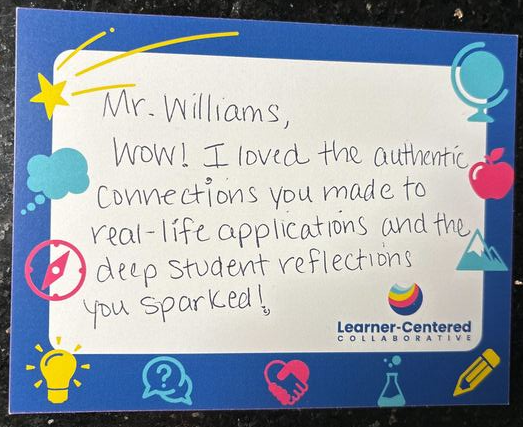
For a deeper dive into the student experience, consider shadowing a student for a full day, participating in their entire schedule to gain invaluable insights into the learner’s perspective that may not be apparent from brief observations or survey responses.
Classroom visits offer a valuable perspective in a mixed-method approach to understanding your educational community. These brief observations allow you to witness a variety of classroom experiences and contexts, providing a broad overview of daily school life. However, the brevity of these visits limits a deep understanding of each classroom’s unique context and experiences. To balance this, consider combining classroom visits with other methods like surveys or focus groups. This integrated approach allows you to gain both a wide-ranging view of classroom dynamics and in-depth insights into specific experiences, contributing to a more holistic understanding of your school environment.
After Listening

Once you have administered your surveys, hosted your focus groups or forums, and visited classrooms, you’ll have a wealth of input. Your next steps are crucial:
- Summarize your findings: Invest time in analyzing and synthesizing key insights across different stakeholder groups.
- Share the results: This often-overlooked step is vital. Work with a guiding coalition to share your key findings with all participants. Involve this diverse group of stakeholders in presenting and discussing the results with the wider community. Doing so will generate buy-in and goodwill for your transformational change initiative and create both a sense of transparency and ownership.
Listening and engaging in empathy work with your community, especially with learners, is the first step to meaningful, sustainable transformation in your educational community. By listening deeply, observing firsthand, and engaging in thoughtful dialogue, you gain invaluable insights that will shape your approach. This process does more than gather information—it demonstrates to your community that their perspectives are integral to the path forward. When you build initiatives based on authentic community input, your community becomes your biggest ally in the work. When well done, this stage lays the groundwork for a collaborative, learner-centered future that truly reflects the needs and aspirations of your entire educational ecosystem.
At Learner-Centered Collaborative we support schools and districts in this process, what we call a Discovery Visit, in preparation for developing a Framework for the Future or any change initiative. Interested in learning more? Connect with us today.

